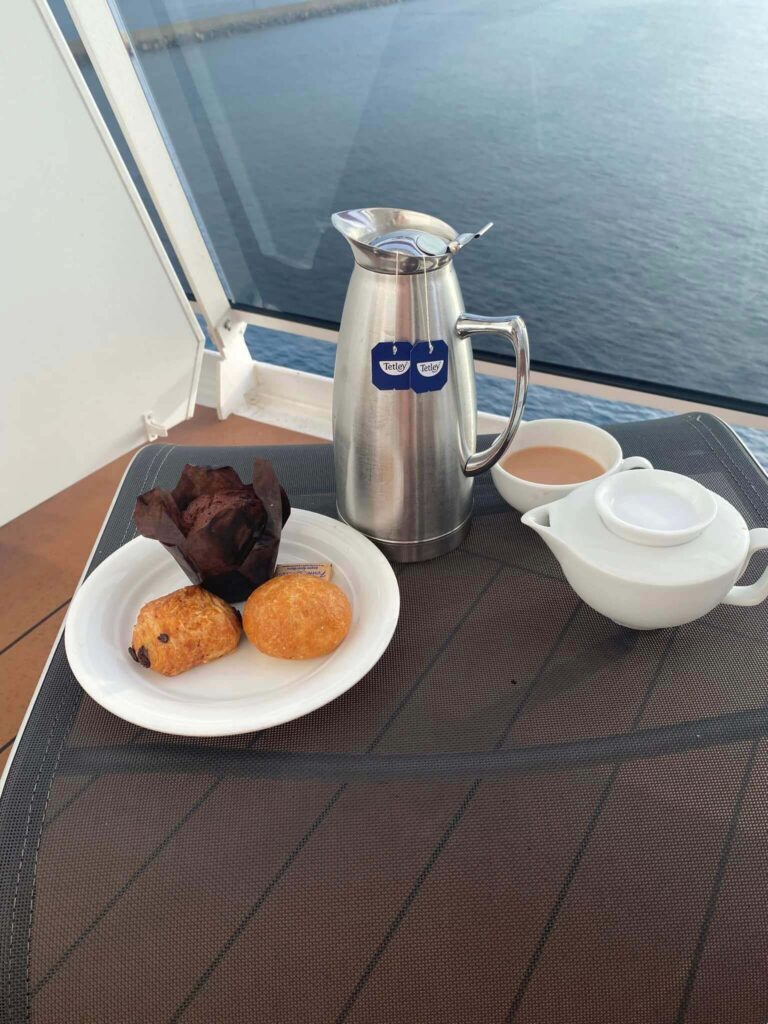In the cruise world, tipping is both a tradition and a system. Some people like it, many others hate it, but it’s definitely something we cannot ignore.
While cruise lines now automate most gratuities, you’ll notice that a cruise ship crew member’s face lights up when you hand them a cash tip.
In this post, we’ll explore how cruise tipping works today, what happens to those automatic charges versus direct cash, and why a bill in hand can mean so much to the people who make your vacation special.
How It Works Today
You probably already know that cruise lines have largely moved to an automatic gratuity system.
On most mainstream cruise ships, the cruise line will add a daily service charge or tip to your onboard account for each passenger in your cabin.
Typically, this amount ranges from about $16 up to $25 per person, per day (depending on the cruise line and even your cabin type).
For a week-long cruise, these automatic gratuities can add up – a family of four might see a few hundred dollars in tips charged by the end of the trip.
The idea behind automatic gratuities is to make tipping convenient and fair. Rather than each guest handing out cash in envelopes at the end of the voyage (as was common in the old days).
In addition, this method ensures that everyone receives a share. Not only the people you interact with (stateroom attendant, dining room servers, etc.), but also behind-the-scenes staff like kitchen crew and cleaners who help keep the ship running smoothly.
You can often prepay them before your cruise (locking in the rate) or just have them billed daily to your onboard account.
Most lines also auto-add a 15–20% tip to bar bills, specialty restaurants, and spa services. In short, by the end of your cruise, a substantial chunk of pre-set tips will have been collected behind the scenes.
But here’s the big question: if the cruise line is already charging your account for tips, should you even tip extra in cash? And what happens if you do (or don’t)? To answer that, let’s look at where those automatic gratuities go versus what cash tips mean for the crew.
Automatic Gratuities vs. Cash: Who Gets What?

When you pay the automatic gratuities, the money goes into a pool that is shared among various crew members according to the cruise line’s formula.
Typically, positions like housekeeping (stateroom attendants), dining services (waiters, assistant waiters, etc.), and others in the “hotel” department each get a cut.
As I was saying before, a portion also goes to crew you never see —such as laundry workers or galley staff —because they contribute to your experience as well.
Now, what about cash tips given directly to a crew member? This is where things get interesting.
In most cases, a cash tip handed directly to, say, your cabin steward or favorite bartender goes straight to that person’s pocket as a personal bonus.
One former cruise waiter shared that a “normal” week of sailing might bring in more than $100 in cash tips given by guests directly during the trip – that’s on top of the automatic gratuities they were already receiving.
Although there was a bartender who said he earned as much as $900 a day in tips, I explained how he did it in this article.
As you can tell, these kinds of direct tips can significantly boost a crew member’s earnings for that trip.
They do not have to share that portion with others, nor turn it over to the pool – it’s a direct thank-you from you to them.
This is why you’ll often see a face light up or even get a hug when you hand over a little envelope or cash.
On the flip side, some guests choose to remove or reduce the automatic gratuities at the front desk and tip only in cash to individuals they deal with.
While this can result in a higher payout to those particular crew members (since you’re essentially giving them the whole amount directly), it’s a bit of a double-edged sword.
Yes, the waiter or room attendant you tip might end up with more in hand, but the behind-the-scenes folks you never met will get nothing from you in that scenario.
When You Should Remove Automatic Gratuities

Cruise lines and many passengers caution against outright removing the standard gratuities unless there was a serious service issue.
I wrote an article on how to remove gratuities on Royal Caribbean, but you can follow the same steps for any cruise line.
Personally, I’ve never done it because I’ve never had any issues that made me feel the need to, but again, if you’re really unhappy with the onboard service, there’s nothing stopping you from asking for the gratuities to be removed.
On the other hand, I always carry some cash with me to leave a tip, especially if I request any extra services.
For example, if I ask for one of the 10 things your cabin steward can bring you on a cruise or if I order room service, I always leave a little tip. It doesn’t have to be much — even a small amount shows your appreciation.
You can still save money on lots of other things. Just take a look at the guide on how to save a lot of money on a cruise ship.
